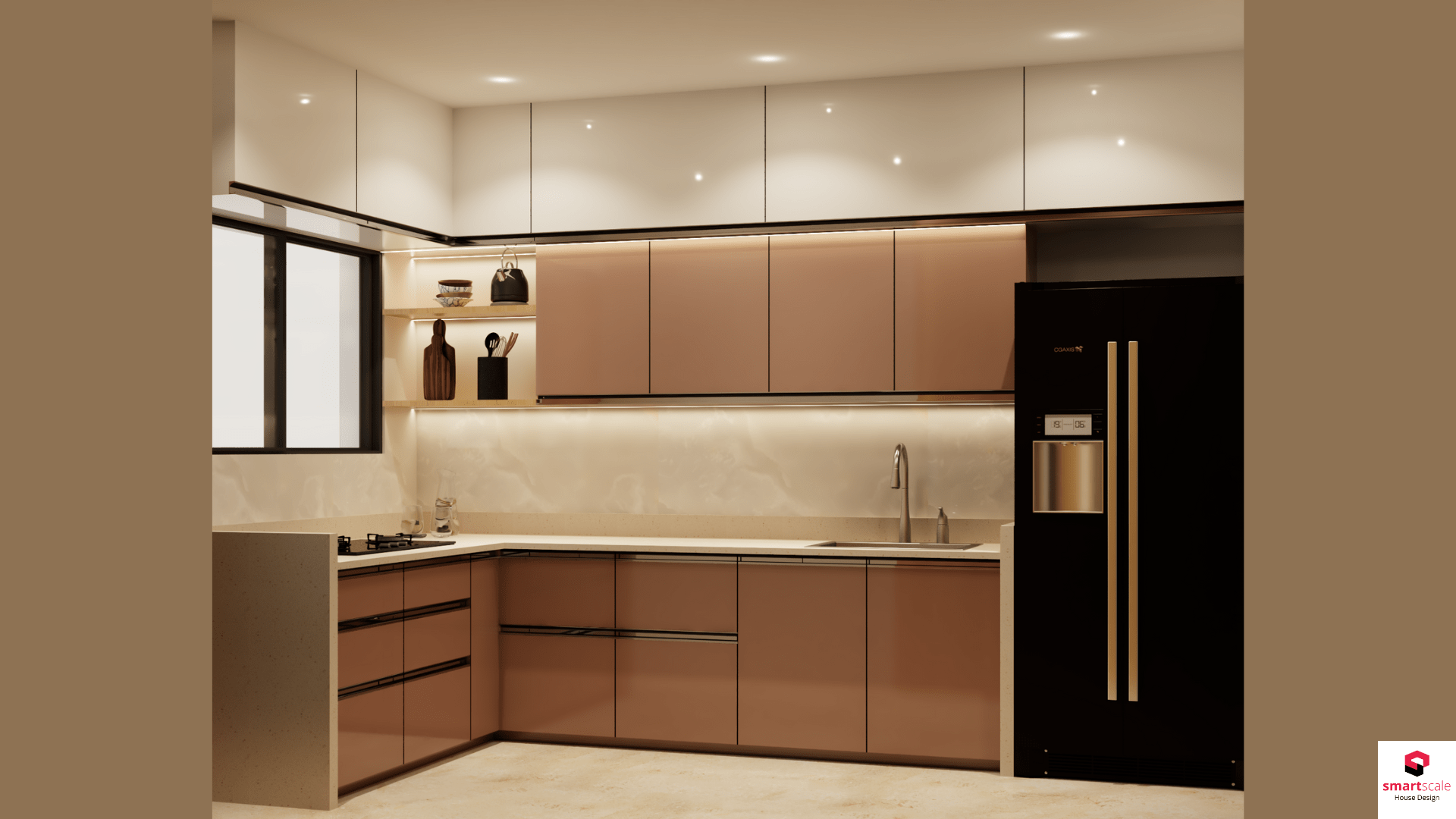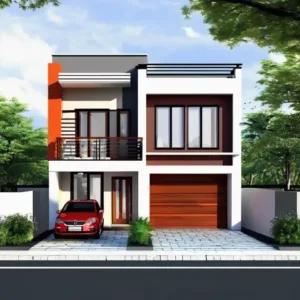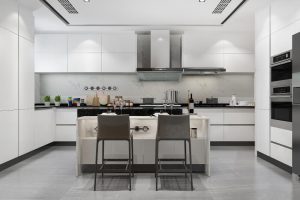The kitchen often becomes the hottest room in the house, especially during cooking hours and summer months. Excess heat in the kitchen not only creates discomfort but also increases energy bills as cooling systems work harder to compensate. This comprehensive guide explores effective strategies and practical solutions to keep your kitchen cool while cooking and throughout the year.
Understanding Heat Sources in Your Kitchen
Before tackling solutions, it’s important to identify what makes kitchens heat up:
- Cooking appliances (stoves, ovens, toasters)
- Dishwashers and refrigerators
- Poor ventilation
- Direct sunlight through windows
- Inadequate insulation
- Inefficient lighting systems
Immediate Strategies for a Cooler Kitchen
Optimize Your Cooking Habits
Changing how and when you cook can significantly reduce kitchen heat:
- Cook during cooler hours (early morning or evening)
- Batch cook several meals at once to minimize cooking time
- Use lids on pots to retain heat and cook food faster
- Match pot sizes to burners to prevent wasted heat
- Defrost frozen foods in the refrigerator instead of on the counter
- Consider no-cook meals during hot weather (salads, sandwiches, cold soups)
Smart Appliance Usage
Small changes in how you use appliances can make a big difference:
- Use smaller appliances instead of the oven (slow cookers, pressure cookers, air fryers)
- Microwave whenever possible as it generates less heat
- Keep appliance maintenance up-to-date for maximum efficiency
- Clean refrigerator coils regularly so they don’t have to work as hard
- Run dishwashers at night and use air-dry setting instead of heat dry
- Keep oven door closed while baking; each time you open it, the temperature drops 25-50 degrees
Effective Ventilation Techniques
Good air circulation removes hot air and cooking odors:
- Use range hoods that vent to the outside rather than recirculating
- Run exhaust fans during and after cooking
- Create cross-ventilation with strategically placed fans
- Install ceiling fans to improve air circulation
- Open windows on opposite sides of the kitchen for natural cross-ventilation
- Consider portable air conditioners or spot coolers for extreme heat situations
Long-Term Solutions for Kitchen Cooling
Kitchen Design Considerations
If you’re remodeling or building a new kitchen, consider these cooling elements:
- Position kitchen on the north or east side of your home
- Install proper insulation in walls and ceilings
- Choose light-colored cabinets and countertops that reflect rather than absorb heat
- Install energy-efficient windows with proper shading
- Create separation between cooking areas and the rest of the kitchen
- Design an open floor plan to improve air circulation
Window Treatments and Natural Light Management
Managing sunlight can significantly impact kitchen temperature:
- Install window blinds, shades, or curtains to block direct sunlight
- Apply window films that reduce heat transfer
- Add awnings over kitchen windows
- Consider exterior shutters or shade screens
- Plant shade trees or tall shrubs near kitchen windows
- Install light shelves to direct natural light while blocking direct heat
Energy-Efficient Appliance Updates
Modern appliances can help keep your kitchen cool:
- Upgrade to energy-efficient models with ENERGY STAR ratings
- Choose induction cooktops that transfer less heat to the surrounding air
- Consider convection ovens that cook faster at lower temperatures
- Invest in well-insulated appliances that keep heat inside
- Select refrigerators with rear or bottom coil designs
- Explore outdoor cooking options for hot weather (grills, outdoor kitchens)
Cooling Technologies and Gadgets
Kitchen-Specific Cooling Solutions
Specialized products designed to cool your cooking space:
- Compact counter fans that direct air where needed
- Cooling towels and bandanas for personal comfort
- Ice bands for wrists that help cool your core temperature
- Misting systems for outdoor kitchen areas
- Phase-change materials that absorb and release heat
- Smart thermostats programmed for kitchen temperature patterns
Smart Home Integration for Kitchen Cooling
Technology can help manage kitchen temperature:
- Smart vents that adjust airflow based on temperature needs
- Automated blind systems that respond to sunlight
- Temperature sensors that trigger cooling systems
- Integrated exhaust fans that activate automatically during cooking
- Smart appliances that minimize heat output
- Whole-home energy management systems that prioritize kitchen cooling
Cost-Effective Solutions
Budget-Friendly Cooling Options
Keeping your kitchen cool doesn’t have to be expensive:
- Use ice bowls with a fan behind them for DIY air conditioning
- Create shade with inexpensive window coverings
- Install reflective window film
- Use damp cloths on the neck while cooking
- Place bowls of ice under ceiling fans to cool circulating air
- Optimize existing ventilation with strategic fan placement
Energy-Saving Practices
Save money while keeping cool:
- Turn off unnecessary lights that generate heat
- Unplug small appliances when not in use
- Reduce oven preheating time
- Cook multiple dishes simultaneously
- Use refrigerator efficiently by avoiding frequent door opening
- Maintain HVAC systems for optimal performance
Seasonal Considerations
Summer-Specific Kitchen Cooling
Extra measures for the hottest months:
- Create meal plans that minimize cooking
- Establish a summer kitchen in a garage, basement, or outdoor space
- Use dehumidifiers to reduce moisture that makes heat feel worse
- Install temporary window reflectors
- Schedule high-heat cooking for early morning
- Consider cold cooking methods (no-cook soups, overnight oats)
Year-Round Temperature Management
Maintaining comfort in all seasons:
- Adjust cooking methods seasonally
- Use ceiling fans in reverse during winter to circulate warm air
- Establish temperature zones in open-concept homes
- Balance heating needs in winter with cooling concerns
- Create seasonal meal plans that work with the weather
- Consider the global climate impact of your cooling solutions
Professional Solutions
When to Consult Experts
Some cooling challenges require professional assistance:
- Persistent overheating despite basic interventions
- Poor kitchen design causing heat retention
- Outdated ventilation systems
- Structural limitations affecting air circulation
- Complex integration of cooling systems
- Balancing historic home preservation with modern cooling needs
Transform Your Kitchen With SmartScale House Design
Is your kitchen consistently uncomfortable due to heat? SmartScale House Design specializes in creating thermally efficient kitchens that stay cool year-round. Our expert designers can help with:
- Kitchen layout optimization for better airflow
- Selection of heat-efficient appliances and materials
- Custom ventilation solutions
- Window treatment recommendations
- Energy-efficient lighting design
- Complete kitchen renovations with cooling as a priority
Don’t suffer through another hot summer in your kitchen. Contact SmartScale House Design today or Fill the Form for a free consultation. learn how we can transform your kitchen into a cool, comfortable cooking space.
Frequently Asked Questions About Keeping Your Kitchen Cool
1. How much can kitchen temperature affect my overall home cooling costs?
An overheated kitchen can increase your home cooling costs by 25-30% during summer months. The heat generated from cooking appliances forces your air conditioning system to work harder, consuming more energy. Strategic kitchen cooling can significantly reduce your overall energy bills.
2. What is the most effective immediate solution for cooling down a hot kitchen?
Creating cross-ventilation is often the most effective immediate solution. Place one fan facing inward at the coolest side of your home and another fan facing outward in the kitchen. This creates a directed airflow that pulls hot air out while drawing cooler air in. Using your range hood simultaneously will enhance this effect.
3. Are there specific plants that can help keep a kitchen cooler?
Yes, certain plants can help reduce kitchen temperature. Aloe vera, snake plants, and peace lilies naturally cool the air through a process called transpiration. They release moisture and create a cooling effect while also improving air quality. Place them away from cooking areas and direct heat sources.
4. How does the color of my kitchen affect its temperature?
Darker colors absorb and retain heat, while lighter colors reflect it. Kitchens with dark cabinets, countertops, and walls can be 3-5 degrees warmer than those with lighter finishes. If repainting or renovating your kitchen, choosing lighter colors can make a noticeable difference in temperature.
5. Can changing my lighting really make my kitchen cooler?
Absolutely. Traditional incandescent bulbs convert only 10% of energy to light, while the remaining 90% becomes heat. Replacing them with LED bulbs, which produce minimal heat, can reduce ambient kitchen temperature by 1-2 degrees while also reducing electricity consumption by up to 80%.
6. What type of window treatments work best for kitchen windows?
External solutions like awnings are most effective as they block heat before it enters the window. For interior treatments, cellular (honeycomb) shades provide excellent insulation. Light-colored, reflective blinds or shades that still allow some natural light are ideal for kitchens. Avoid heavy drapes that can trap heat and collect cooking odors.
7. How can I tell if my kitchen ventilation is adequate?
Check for these signs of inadequate ventilation: lingering cooking odors, excessive condensation on windows, sticky residue on surfaces, or noticeably higher temperature compared to adjacent rooms. A properly sized range hood should move at least 100 CFM (cubic feet per minute) of air for every 12 inches of stove width.
8. Will a portable air conditioner work well in a kitchen?
Portable air conditioners can be effective for kitchens, but they have limitations. Choose one with sufficient BTU capacity for your kitchen size (typically 8,000-12,000 BTUs for most kitchens). Position it away from heat-generating appliances and ensure proper ventilation for the unit itself. Be aware that running costs can be higher than central air conditioning.
9. How can I keep cool personally while cooking in a hot kitchen?
Stay personally comfortable with cooling neck wraps, wrist bands (which cool blood flow), lightweight moisture-wicking clothing, and staying hydrated. Keep a small personal fan at counter level directed toward your work area. Taking short breaks in cooler areas of your home can also help prevent overheating.
10. Are outdoor kitchens worth the investment for keeping heat out of the house?
For those in hot climates who cook frequently, outdoor kitchens can be valuable investments. They keep cooking heat entirely outside your home, potentially saving 10-15% on summer cooling costs. Even a simple covered grill station with counter space can significantly reduce indoor kitchen use during hot weather, making your home more comfortable and energy-efficient.








